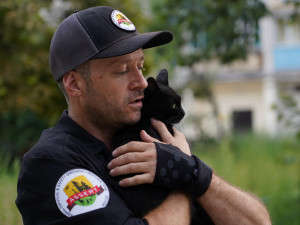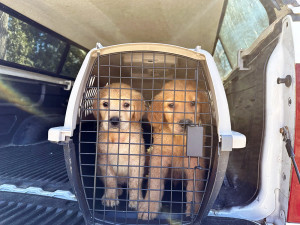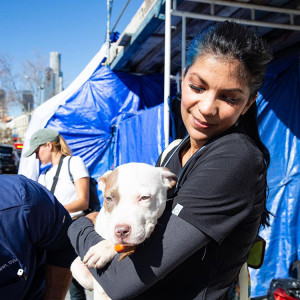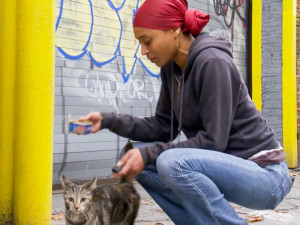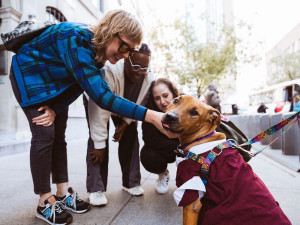The ASPCA Rescued 300 Mistreated Dogs Across Four States in Only 30 Days
Here’s how they were able to pull off this incredible feat.
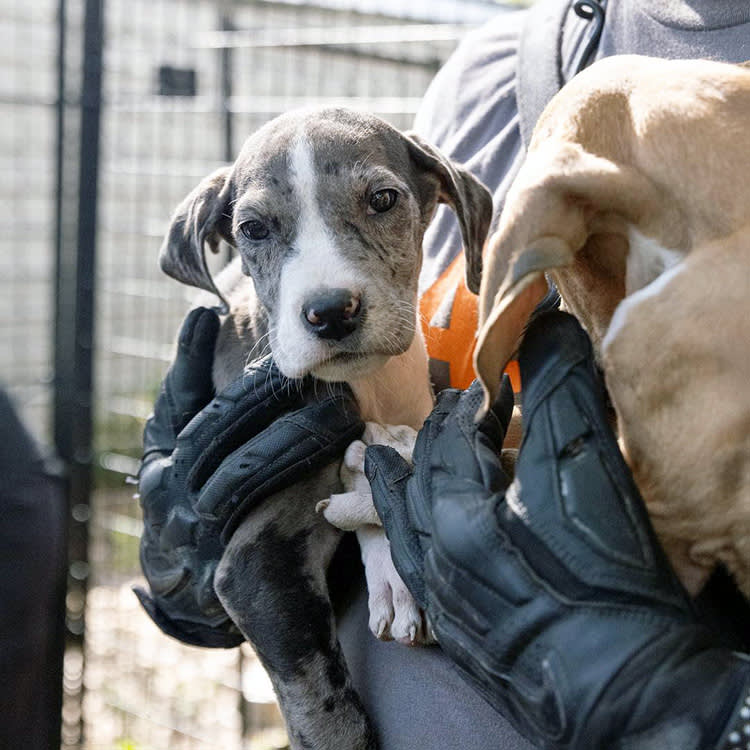
Share Article
In the span of a month, the ASPCA has helped opens in a new tab save nearly 300 dogs in four separate rescue efforts in Florida, New Jersey, Mississippi, and New York. The organization did these rescues in partnership with local shelters and law enforcement agencies. Part of this operation including saving animals from a self-described animal rescue group — where some dogs were found malnourished and with untreated medical conditions — and a backyard-breeding operationopens in a new tab, where over 100 Great Danes and Bulldogs were kept in extremely unsanitary conditions. Many of the animals rescued are now in the midst of receiving critical medical and behavioral care.
“The ASPCA generally works across the country to provide all sorts of resources to animals,” Elizabeth Brandler, legal advocacy senior counsel at the ASPCA, says. “But one of the major things we also do is anti-cruelty work.” Brandler spoke to us about the ASPCA’s recent cases, and what we can do to help their efforts.

Get (totally free) deals for food, treats, accessories, tech, and way more pet parenting must-haves.
opens in a new tabNew Jersey
This February, in Vernon Township, New Jersey, the ASPCA assisted the Sussex County Prosecutor’s Office and the Vernon Township Police Department in removing more than 90 dogs from a self-described animal rescue group. There, according to the organizationopens in a new tab, they found dogs and puppies living among their own feces and urine, some underweight and in need of medical care, and many dirty and matted. They also found dogs who had died.
Officials seized the dogs, and the property owners have been charged with six counts of animal cruelty. These charges are related to the dead dogs found on the property and neglect for the animals. The animals were transported from New Jersey to the ASPCA’s Cruelty Recovery Centeropens in a new tab in Ohio.
Mississippi
From there, the ASPCA responded to a call from the Oktibbeha County Humane Society (OCHS) in Mississippi to help remove more than 50 dogs from a hoarding situation. The dogs were malnourished and fighting for resources, and many had untreated injuries and illnesses. Some were relocated to the OCHS shelter for treatment, and others were placed with shelter partners, where they’ll be up for adoption.
Florida
While working in Mississippi, the ASPCA was planning and gathering resources for a major rescue effort in Union County, Florida. There, they helped save approximately 120 dogs, primarily Great Danes and Bulldogs, from a breeding operation.
“Upon our arrival, we discovered some animals who appeared underweight with untreated medical conditions and living in extremely unsanitary conditions,” Matt Bershadker, ASPCA president and CEO, said in a press releaseopens in a new tab. The dogs were transported to an emergency shelter, where they received medical care, behavioral treatment, and enrichment, as well as forensic exams to support a criminal investigation against the breeder.
New York City
Finally, the organization saved dozens of animals in New York City, including 11 dogs and two cats — many underweight, dehydrated, and sick — living in filthy conditions in Queensopens in a new tab.
How the ASPCA got involved
Each of these cases started with a request for assistance from a local law enforcement agency, Brandler says. She used the Florida case, with the backyard breeder, as an example — there, they had a relationship with the sheriff’s office, having worked with them in the past on other cruelty cases.
“They let us know what they were dealing with, what the situation was, and what they had been trying to do to improve it.” Because they weren’t seeing any improvement, they wanted to pursue a criminal case, and they asked the ASPCA to help.
Brandler says the ASPCA followed their typical course of action — first, they reviewed the case to make sure they had sufficient probable cause. (In situations where they don’t find sufficient evidence of probable cause, or if they have questions they’d like answered, they can send investigators to work with law enforcement to provide guidance.) In this case, they found sufficient probable cause.
“We were comfortable with the proof that there was long term neglect going on, and it needed to be addressed,” Brandler says. “The animals were suffering.”
On the day of the rescue, they flew in their (extensive) team from all over the country. This includes supplies, investigators, crime-scene analysts, attorneys, animal behavior specialists to handle the dogs, veterinarians, forensic veterinarians, and transport folks. “So it’s a huge effort,” Brandler says. “And pretty resource intensive.”
After the sheriff’s office executed the warrant, they called on the ASPCA to let them know they were ready for their help. From there, the organization helped them document the crime scene, and assess how many animals were there, what care they needed, and how urgently they needed it.
“One of the biggest obstacles we faced in this case was finding a place to actually house all of these animals,” she says, adding that they rescued about 120 Great Danes and Bulldogs from the site. “We had to find a temporary shelter where we could bring them all to provide them with care.” There, they received desperately needed medical care and forensic evaluations, which were turned over to law enforcement.
How each case was treated
This was clearly a criminal case, but not every rescue plays out that way. “There's some cases, particularly animal fighting cases and really egregious cruelty, where you really do want to throw the book at them,” Brandler says. “But we also find that some cases, especially some of the hoarding cases, where you end up with an owner who is just overwhelmed, and things have gotten out of control.”
In these situations, she says, criminal charges are usually still appropriate, but only to intervene and remove the animals when the person who has been neglecting them isn’t willing to surrender them on their own. “It’s not, like, illegal drugs, or something, where you can’t have it — they’re still their property,” she adds. “So, we also work with [prosecutors] to bring a proceeding.”
How you can help
Though it may seem like it, Brandler says it’s hard to say whether there has been a recent uptick in cases like these, particularly in the realm of backyard breeding, which has led to an increase in so-called “designer dogs” ending up in sheltersopens in a new tab. There is no cohesive database or monitoring system to tell us. “I think these cases have always been out there [and] will always be out there, unfortunately,” she says.
It helps when local law enforcement agencies are aware of what to look out for in terms of animal abuse, she said, and have prosecuted cases like these in the past. “That way they know that they can address it, they know they can reach out to us and other groups. And it's not something that they just have to say — ‘Oh my god, this is too much. We can’t deal with it, so we're just going to ignore it.”
Similarly, she says, the most important thing the average person can do to help the ASPCA’s efforts is “to simply be aware of it, and understand that animal cruelty can happen anywhere.”
And it doesn’t only mean violent acts against an animal — it can also mean neglect, or a situation where someone has become overwhelmed and is unable to provide for an animal’s needs. If cases like these are caught early, criminal charges can often be prevented, and instead services can be offered to help both the person and the animal.
Otherwise, Brandler recommends reaching out to your local shelter and seeing what they need — whether it be supplies, donations, or volunteers. “I think that’s a good way that the everyday person can get involved with and really help the animals in their community.”

Kelly Conaboy
Kelly Conaboy is a writer and author whose work has been featured in New York Magazine, The New York Times, and The Atlantic. Her first book, The Particulars of Peter, is about her very particular dog, Peter. (Peter works primarily as a poet.)
Related articles
![Genesis Rendon holding a pitbull puppy.]() opens in a new tab
opens in a new tabProject Street Vet Is Helping Unhoused Pets—And Their Parents
Vet tech Genesis Rendon shares the challenges and rewards that come with her selfless work.
![four dogs from No Dogs Left Behind at a fence]() opens in a new tab
opens in a new tabNo Dogs Left Behind Faces Harsh Realities to Save the Pups Who Need It Most
The rescue organization’s founder Jeff Berri needs your help to save dogs from horrific conditions and giving them a much-deserved new start.
![Saharai “Sada” Salazar and a large Belgian Malinois dog who is part of the Wolfmother K9 Rescue.]() opens in a new tab
opens in a new tabThe Fiction of “Unadoptable” Shelter Dogs
Wolf Mother K9 founder Saharai Salazar on misunderstood behaviors, giving every pup a chance, and the need for more empathy.
![Latonya “Sassee” Walker feeding a cat on the sidewalk]() opens in a new tab
opens in a new tabHow Sassee Walker Is Single-Handedly Saving Brooklyn’s Neediest Cats
“I have the tools to make these cats’ lives better and I use them. I have to.”
![Group of young people pet a brown dog with a jacket on outside.]() opens in a new tab
opens in a new tabHow DIY Animal Rescuers Tell The Exhausting, Rewarding Stories of Their Work
In volunteers’ Instagram videos, you’ll see both the joy and the fatigue behind finding these deserving pets homes.
![Black woman smiling and holding a Siamese cat which is looking into the camera]() opens in a new tab
opens in a new tabCARE Is Amplifying BIPOC Voices to Keep People and Pets Together
“We don’t consider what we are doing animal welfare work. We are taking a holistic approach to well-being for animals and humans.”
